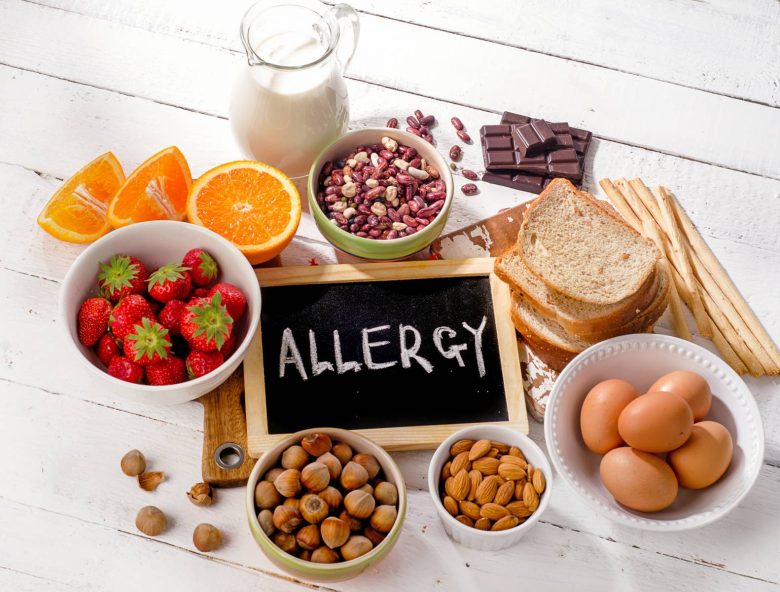Food is a dangerous territory and even more so if there are chances that someone in the house could be allergic to something that may be lurking in the kitchen. The signs depend on the person’s reaction, either mild or extreme, so finding out what type of food is ingested is very important. Some people are faced with inexplicable stomach upset, skin irritation, or any other grievance after having a meal, and it is important to analyze the reason for these conditions to remain healthy and so eat their favorite meals.
This guide will take you through the maze and advise you on how to accurately assess food allergy tests. Whether it is identifying typical food allergens or knowing different types of allergy tests, we shall take you through every aspect. Let us support this cause and see how one can deal with possible food allergies without giving up on food!
Understanding Food Allergies:
Food allergies occur as a result of the body’s defence system mistakenly attacking harmless agents as pathogens. This usually results in an allergic reaction, which includes many symptoms. The symptoms of food allergies can go from mild itching and hives to nausea and vomiting, and the most severe form: is anaphylaxis. The most common proteins that form the basis of the offending allergies include peanuts, tree nuts, shellfish, fish, eggs, milk, wheat, and soy. It may be worth noting that even a minute quantity of such pollutants may wreak havoc on the affected people negatively.
Be sure to note as well that food allergies are different from food intolerances. They come into play in the guessing process after eating specific foods and could include bloating, gas, and other uncomfortable sensations. Of most concern is avoiding such discomforts or even pains that occur when food intake is accompanied by specific symptoms. It is very important to note that everyone reacts differently to self-management situations. This enables people to choose what to eat and what to avoid to remain healthy, yet enjoy the company of their friends and family over meals.
Most Popular Food Allergens:
Although there are many allergy-causing foods, there are some that can be primarily responsible for the development of an allergic reaction in many people. Which take peanuts to be the first. Even a small amount of these could result in adverse effects.
Then come tree nuts such as almonds and walnuts. Their proteins can trigger the immune system in those that are allergic to them.
Milk also tends to make the list, especially in infants. Lactose intolerance allergies are frustrating effects that can produce some unique mild symptoms, such as skin rash, to complications such as inflammation of the intestines.
Summertime also poses a threat of caution. Some allergy sufferers have reactions that affect their airway passages or stomach.
Then the wheat-gluten component is also getting a fair bit of publicity nowadays. One of the most serious of wheat allergies is coeliac disease, and managing it mostly involves dietary management.
Shellfish such as prawns and crabs fall in this category of food allergens too. Most of these types of allergies are forever and even with treatment, all measures are put in place to ensure no such consumables are ingested.
Allergy Tests and Their Types:
When it comes to food allergy testing, different methods can be employed. Among the methods, skin prick tests are the simplest. If you do your skin prick test, a bit of the allergen is applied to your skin and it is pricked lightly. If there’s any allergy, one will have a rash or something.
Another option to explore is blood tests. In this case, the focus is on testing the immune system for IgE antibodies against certain foods. These tests do not involve skin pricks, so no irritation will occur, which could prove helpful.
Several oral food challenges are administered where patients slowly eat a potential allergen under medical care. This form of testing is often regarded as the most superior because it objectively determines how a patient’s body reacts to certain foods.
Every one of these types has its advantages and disadvantages and therefore, it is important to talk with an allergy specialist about which one will suit you best, taking into consideration the symptoms and the health history of the patient.
How to Prepare for an Allergic Test?
Avoiding allergy tests without preparation is necessary for getting dependable outcomes. First and foremost, look at the health care provider and describe all the medicines that you are taking now. Some of them might require stopping before the test. Regarding this, keep a food calendar as you get closer to your appointment. Make a list of what you eat and if any symptoms occur when that food was eaten. This evidence may assist in the detection of the causes of bigger allergies.
On the day of the test, make sure to dress in comfortable clothing and most importantly, take along a set of questions for your allergist. Anxiety is common even to anxiety; understanding the procedure can help mitigate some phobias. If there are instructions regarding not having any food or drinks a short while before the test, comply. Mental preparation is not a secondary aspect of physical preparation. Background knowledge alleviates anxiety and enhances the comprehension of any discussions with the health care practitioner about the outcome and what to do next.
Reading Results and Subsequent Actions:
It is important to say that the interpretation of the allergy test is decisive. If you test positive for an allergy to a food, the immune response indicates that the body has been sensitized against that food. It is high time to be careful now. An equally important negative result can be provided. This means that the examined products are not most likely responsible for the symptoms that the patient has complained of. Nevertheless, this does not entirely exclude other possibilities.
It is important to reconnect with an allergist or dietitian for the objective of getting individualised feedback. They can help you steer clear of allergens while also recommending safe options. Remember that certain reactions might be multifactorial, like the amount ingested or how the food is cooked or prepared. Tracking what people eat over time helps identify patterns in dietary habits. If food allergies are diagnosed, then it would be wise to plan for an emergency action in case of exposure to certain culprits. Knowing what is to be done after exposure can be a crucial step in ensuring that one’s health is not compromised in any way.
Other Approaches to Consider:
Alternative Methods For Identifying Food Sensitivities When standard allergy tests do not yield more answers, food sensitivities can be explored using different approaches. At the very least, the elimination diet is one of the viable options. This means for a few weeks you will not eat anything that you suspect may cause allergies, and then you will start slowly adding items one by one. It is useful in pinpointing specific allergens as one relates to the dietary intake of the individual.
Another alternative is maintaining an elaborate food consumption diary. A food diary that documents foods eaten and any sponsoring symptoms can show over time that one or more of these foods may be harmful.
Certain individuals use muscle testing or kinesiology as a means of relief. They explain that if an individual has four foods in front of them and tests a muscle, acupuncture does vary the strength of the muscle as a test for sensitivity.
In addition, certain entire methods contain an emphasis on the health of one’s intestines as they look into how the dysfunctions of gut bacteria may lead to certain sensitivities. The effect of diet and probiotics may help to give the best way of dealing with such responses without the need for performing trial tests.
Expert Advice on How to Cope with Food Intolerance:
The only way to manage food allergies and intolerances is to be prepared ahead and to be very careful. First thing, make it a practice of checking the labels of any food product. Some ingredients can be present in the most unlikely of foods, which is why it helps to know such ingredients. Plan meals that exclude all the possible allergens. This keeps you away from such dangerous foods and it also helps you be innovative in the kitchen. The same goes for eating out or at social gatherings. Tell the restaurant staff about your allergies. If any doubts arise about how the food is prepared, please ask.
If a doctor so recommends, then consider keeping a booklet on how to use an epinephrine auto-injector if you are ever prescribed one. Being wrong-footed in emergencies cannot be stressed enough. Help from families and friends with allergies can also be helpful. For instance, offer ideas on how to cope with food sensitivities from those who are experiencing the same problem as you are through available online platforms or communities in your locality.
Conclusion:
Living with food allergies is truly a challenge, but understanding your own body is a strength. Knowledge is power, as it allows you to make decisions on what to eat. A food allergy test comes in handy in this case. It will help establish the allergens and assist with dietary recommendations. Continued vigilance is required in coping with these diseases. Always keep in touch with your physicians and anyone involved.
As a takeaway from this study, it should be noted that you are not alone in dealing with such situations. There are support networks and tools available to you. Adjusting one’s lifestyle to suit all these needs will only be beneficial. Be open to new foods; when you do, remain safe by being inquisitive and taking action.
FAQs:
1. What is the difference between food allergies and food Intolerance?
Food allergy can lead to an immediate response from the immune system, which accompanies various life-threatening reactions. Food intolerance, on the other hand, strictly deals with digestive ailments and does not relate to the immune system in any way.
2. How long after eating a food that causes an allergic reaction has a person gotten before the allergy appears?
In some cases, the reactions can begin in a matter of minutes, while in other cases, it can take hours, depending on how sensitive or nonsensitive one is and to which allergen.
3. Do we have solutions that would help solve the phenomenon of food allergies?
Food allergies cannot be cured, but they can be managed through avoidance methods, the use of an epinephrine auto-injector, and collaboration with physicians for copy action plans.
4. Will kids eventually grow out of their allergy to certain types of food?
Yes, there are some children that do not fall within these categories, including those who have child milk and egg allergies, but there are other classes of allergies that may cause chronic illness in adulthood.
5. Will simultaneous testing of several allergens involve the risk to the patient?
It is indeed possible to perform these tests for a large number of allergens, enjoying every person’s susceptibility, but it has to be done with an expert at all times.




